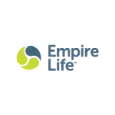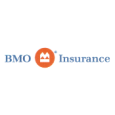Whole life policies can provide tax-free benefits for your family
Whole life insurance is considered by many as the ideal plan when coverage is required for a lifetime. It offers a fixed premium that will never change; the policy can be paid in full over a shortened period, for example, 20 years being the most popular. Most plans build a cash value that can never be reduced once allocated to the policy. This cash value is guaranteed and can be borrowed or used as collateral for a loan from a bank. Clients can combine a whole life with a term life policy, in essence, a blended insurance plan to optimize the cost of broader coverage, such as a mortgage, with term life insurance and lifetime needs with whole life insurance.
More Canadian families choose IDC Insurance
POLICY HOLDERS
INSURED BENEFITS
YEARS OF SERVICE
The two types of whole life insurance policies
When purchased at a younger age, the whole life insurance premium is always cheaper than buying the same coverage amount when you are older. There are also situations where whole life insurance may make sense as part of your total financial planning needs.
Participating policies pay a dividend each year based on the performance of the investments that the money paid by these policyholders achieves. The face value of the policy will increase over the years if the policyholder does not take the dividend as a cash payout which is one of the options but is seldomly used by most policyholders.
If the investments do very well, some profits will be set aside to make up the difference when the fund underperforms, resulting in relatively stable dividend payouts. In past years due to low bond yields, the dividend scale for some insurance companies has been decreasing slightly. At the moment, the dividend scale of most insurance companies is relatively stable.
There is also a difference in how insurance companies pay dividends. Most companies are stock companies or publicly traded companies whose shares are listed on stock markets. In this case, the profits flow to the benefit of the shareholders. For example, Manulife refers to their dividends as a performance credit, and the amount of the credit is determined by the board of Manulife based on the pool’s returns and other factors. While mutual insurance companies pay dividends as issued and often declare the dividend scale in advance annually.
Due to the complexity of this product and several variables are not fully guaranteed, we cannot provide instant quotes for this type of whole life insurance. We would welcome an opportunity to speak to you and provide examples of its many benefits and affordable premium options.
Non-participating policies guarantee the premium, cash values and amount of insurance your beneficiary will receive. All insurance companies provide an illustration that includes this information, and the illustrated values are fully guaranteed. Typically, it is for a set amount of life insurance, and the face value does not increase as it does with participating policies. It will contain a cash value, and this is a guaranteed cash value that can be accessed as a policy loan or if you collapse the policy (tax implications).
Many Canadians prefer this type of whole life as people want to be guaranteed they will get the amount of insurance purchased. The premium is often less than a comparable participating policy. We can provide instant quotes for this type of whole life insurance as it is fully guaranteed.
Non-participating whole life policies are frequently used to provide for estate giving, final expense, tax-advantaged strategies for the high net worth. However, for everyday families, we often recommend a blended plan that includes a smaller face amount, making these policies more affordable for growing families, retirees, and seniors.
These policies have quick payment options, and you can get instant quotes for these options as well. Depending on the person’s age when buying the policy, they can be paid off in 10, 15, 20 years or paid up at age 65. Obviously, the quicker it is paid off, the higher the premium, but the return on the higher premium can be significant as the cash values increase faster. We have successfully developed many affordable plans for our clients where the premiums end at about retirement age.
The four components of a whole life insurance policy
-
Mortality Cost – The cost that the actuaries calculate will provide funds to pay the claims based on mortality tables.
-
Administration Cost – The company assigns a cost for the administration plus the premium tax, about 2% in most provinces.
-
Savings or Investment – This is what is left over after the first two expenses are taken out of your premium.
-
Return on the Savings – This is the interest rate credited to the cash value portion of your account each year. For whole life policies, it is called dividend for participating policies or a performance credit with Manulife, which works similarly to the participating policy’s dividend.
Six tips for those considering whole life ownership
Over the years, our advisors have had the pleasure of working with many Canadians looking at whole life ownership. We have some great advice to share that you can count on to ensure you are getting the best value when setting up a whole life policy. Our best piece of advice for most clients has always been.
“It is not expensive to move the financial risks of your family or business in the event of your death to the insurance company. It is the most financially-sound and responsible thing to do.”
There are a few remaining mutual insurance companies in Canada, such as Equitable Life, where the company’s permanent insurance policyholders are shareholders. Mutual companies do not have shareholders like publicly-traded insurance conglomerates. In the case of a mutual company, if the returns in the “whole life pool” are not what the board would like, they can move some of the profits from the operation into the pool to sustain the dividend scale. Since the policyholders are also the company’s shareholders, if the company demutualizes (when it becomes a stock company), policyholders will get paid as a shareholder based on a formula. Many years ago, Manulife demutualized modest-sized policyholders received well over $10,000 in shareholder value.
Many whole life policies are illustrated assuming a historical dividend or performance credit level. Still, there is ongoing pressure to reduce these dividends and credits in these times of reduced long-term returns and increased regulatory requirements. Ensure the illustration includes what will happen if the dividends are less than projected and that you are comfortable with it. Our advisors generally highlight the death benefits and cash values based on the current dividend scale minus 1%, historically conservative.
Many whole life insurance illustrations or policies will show two columns of the cash values – one is guaranteed, and the other is based on the dividends, which are not guaranteed. The dividend scale used in the illustration gives you some indications of these non-guaranteed amounts. Keep in mind the guaranteed cash values, when shown, are usually very conservative.
Whole life insurance is sometimes referred to as “cash-value life insurance.” This type of cash surrender insurance policy provides permanent insurance that will never expire plus a cash value that increases over time. The cash value is available to the policyholder in a loan, the most common or actual cash withdrawal from the policy. When loaned, the policyholder is charged interest on the loan’s outstanding balance until the total amount is repaid. However, the interest rate is low compared to loans provided by other financial institutions. The loan is also available regardless of the policyholder’s credit rating. Suppose the loan is still outstanding when the policyholder dies. In that case, the loan amount decreases the beneficiary benefits to satisfy the loan plus accrued interest owed to the whole life insurance company.
Suppose you want to get at the cash value without taking out a loan. In that case, one option is to use the cash value as collateral for a loan from a bank or other lending institution, while with some companies, the only option to get access to the cash value is to cancel the policy. There may be tax owning on some or all of the cash value paid out. You should check with our advisor or the insurance company to confirm the tax consequences of collapsing or cashing in a whole life policy. Another advantage offered by most whole life policies is that the policyholders can stop paying monthly premiums for a time when financial challenges arise. The policy’s cash value is then used to pay the monthly premiums in this case.
Due to the low returns and increased regulatory requirements on Canadian life insurance companies, we have seen three and four price increases on the cost of whole life insurance policies over the past several years. This increase in premiums may continue, and the product that we often recommend to clients may not show up on the quoting service and may get removed from the market at some point, according to our peer sources.
Whole life ownership is financially rewarding
Whole life insurance is designed to provide coverage when the insured passes away to help with ongoing expenses and provide income for loved ones. It is also used for paying estate taxes, tax-advantaged charitable giving, estate giving for children and grandchildren. Many business owners use it for several tax-saving and wealth-preserving strategies. It provides a guaranteed amount of insurance at a guaranteed price. Depending on the type of whole life insurance, it can also provide an increasing amount of life insurance and safe returns on the savings portion of the monthly or annual deposits.











